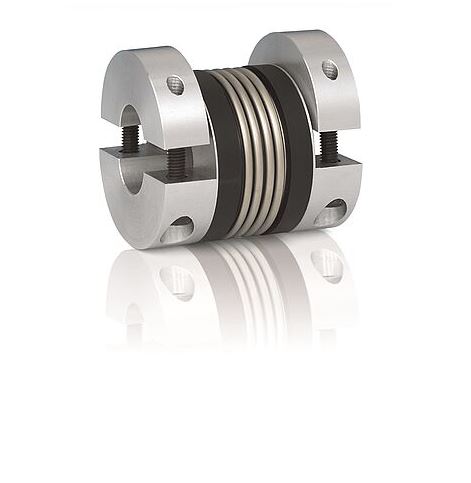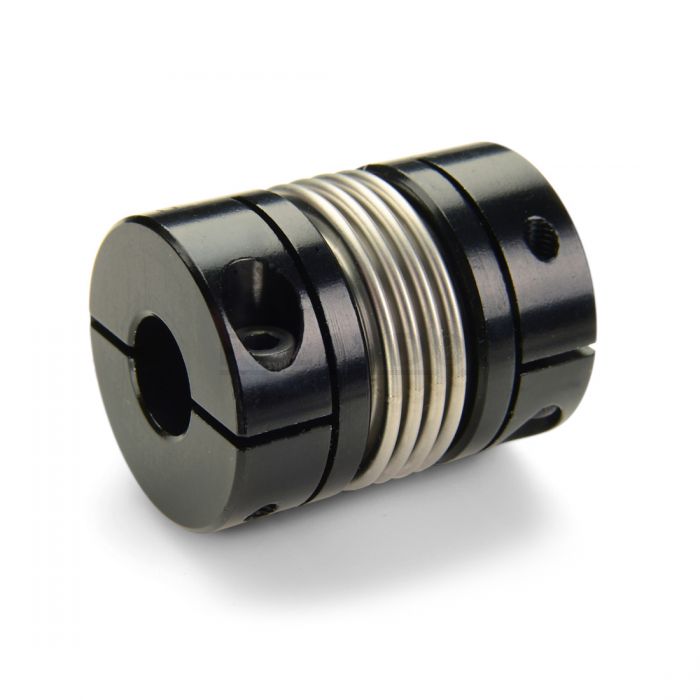Product Description
| Item No. | φD | L | L1 | L2 | M | Tighten the strength(N.m) |
| SG7-6-40- | 40 | 55 | 19 | 24 | M3 | 3 |
| SG7-6-55- | 55 | 65 | 22 | 31 | M4 | 6 |
| SG7-6-65- | 65 | 76 | 27 | 37 | M5 | 8 |
| SG7-6-82- | 82 | 88 | 32 | 41 | M6 | 10 |
| SG7-6-90- | 90 | 88 | 32 | 41 | M6 | 12 |
11111111111111111111111111111111111111111111111111111111111111111111111111111111111111111111111111111111111111111111111111111111111111111111111111111111111111111111111111111111111111111111111111111
1111111111111111111111111111111111111111111111111111111111111111111111111111111111111111111111111111111111111111111111111111111111111111111111111111111111111111111111111111111111111111111111111111111112111111111111111111111111111111111111111111111
| Item No. | Rated torque | Maximum Torque | Max Speed | Inertia Moment | N.m rad | RRO | Tilting Tolerance | End-play | Weight:(g) |
| SG7-6-40- | 13N.m | 26N.m | 8000prm | 9×10-5kg.m² | 15×103N.m/rad | 0.15mm | 2c | 1mm | 231 |
| SG7-6-55- | 28N.m | 56N.m | 6000prm | 2.9×10-4kg.m² | 28×103N.m/rad | 0.2mm | 2c | 1.5mm | 485 |
| SG7-6-65- | 60N.m | 120N.m | 5000prm | 4.6×10-4kg.m² | 55×103N.m/rad | 0.25mm | 2c | 1.5mm | 787 |
| SG7-6-82- | 150N.m | 300N.m | 4500prm | 1.1×10-3kg.m² | 110×103N.m/rad | 0.28mm | 2c | 1.5mm | 1512 |
| SG7-6-90- | 200N.m | 400N.m | 4000prm | 2×10-3kg.m² | 140×103N.m/rad | 0.3mm | 2c | 1.5mm | 1800 |
/* March 10, 2571 17:59:20 */!function(){function s(e,r){var a,o={};try{e&&e.split(“,”).forEach(function(e,t){e&&(a=e.match(/(.*?):(.*)$/))&&1

What are the Maintenance Requirements for Bellows Couplings to Ensure Reliable Performance?
Proper maintenance of bellows couplings is essential to ensure their reliable performance and extend their service life. Here are some maintenance requirements and practices for bellows couplings:
- Regular Inspection: Perform routine inspections of the bellows coupling to check for any signs of wear, damage, or misalignment. Look for cracks, tears, or deformation in the bellows element, as these issues can lead to coupling failure.
- Lubrication: In most cases, bellows couplings do not require lubrication. However, some specific applications or coupling designs may benefit from periodic lubrication of the shafts. Always follow the manufacturer’s guidelines regarding lubrication, as using the wrong type of lubricant can damage the coupling.
- Keep the Coupling Clean: Ensure that the bellows coupling and its surroundings are clean and free from debris. Dirt, dust, and foreign particles can accelerate wear and reduce the coupling’s performance.
- Avoid Overloading: Do not exceed the maximum torque and speed limits specified by the manufacturer. Overloading the coupling can cause premature failure and compromise the system’s performance.
- Address Misalignment and Shaft Movement: If misalignment or shaft movement occurs during operation, identify and correct the root cause promptly. Excessive misalignment or axial motion can put extra stress on the bellows and lead to premature failure.
- Inspect Fasteners: Check and tighten the fasteners, such as set screws or clamping screws, that secure the coupling to the shafts. Loose fasteners can cause the coupling to slip or shift, affecting its performance.
- Replace Damaged Couplings: If any signs of damage or wear are detected during inspection, replace the bellows coupling with a new one. Continuing to use a damaged coupling can result in catastrophic failure and potential damage to connected machinery.
- Follow Manufacturer’s Guidelines: Always follow the maintenance instructions provided by the coupling manufacturer. They may have specific recommendations for inspection intervals, cleaning methods, and other maintenance practices.
By following these maintenance practices, you can ensure that your bellows couplings remain in good condition and deliver reliable performance throughout their operational life. Regular inspections and proactive maintenance help identify potential issues early, allowing you to take corrective actions before they escalate into more significant problems.

Real-World Examples of Successful Bellows Coupling Installations and Their Benefits
1. Aerospace Industry: In aircraft engines, bellows couplings are used to connect the engine shaft to various auxiliary components, such as generators and pumps. These couplings provide precise torque transmission, compensate for misalignments, and dampen vibrations. The benefits include increased reliability, reduced maintenance, and enhanced overall performance of the aircraft engine.
2. Medical Equipment: In medical devices like MRI machines, bellows couplings are employed to transmit motion between various components with high precision and minimal backlash. The bellows couplings’ ability to accommodate axial and angular misalignments is crucial in such applications, ensuring smooth and accurate operation. The benefit is improved imaging quality and reduced wear and tear on the equipment.
3. Robotics and Automation: In industrial robots, bellows couplings are used in joint assemblies to connect the motor shaft to the robot arm. The couplings’ flexibility allows the robot arm to move smoothly and accurately, enabling precise positioning and reducing mechanical stress on the components. This leads to higher robot accuracy and faster cycle times in automated manufacturing processes.
4. Semiconductor Manufacturing: In semiconductor fabrication equipment, bellows couplings play a vital role in wafer handling systems. The couplings help maintain precise alignment between the components, ensuring accurate wafer positioning and minimizing the risk of damage to sensitive semiconductor materials. The benefit is improved yield and production efficiency in the semiconductor manufacturing process.
5. Oil and Gas Industry: In oil rigs and drilling equipment, bellows couplings are used in the drive systems to transmit torque from the power source to various components like pumps and compressors. The couplings’ ability to withstand harsh environmental conditions, including high temperatures and corrosive environments, makes them suitable for oil and gas applications. The benefit is increased equipment reliability and reduced downtime in critical oil and gas operations.
6. Precision Machinery: In high-precision machines such as CNC machining centers, bellows couplings are utilized in the spindle drive systems. The couplings’ backlash-free operation and high torsional stiffness contribute to the machine’s accuracy and repeatability during machining operations. The benefit is improved surface finish, reduced part rejections, and enhanced productivity in precision manufacturing processes.
7. Renewable Energy: In wind turbine systems, bellows couplings are employed to connect the generator shaft to the wind turbine rotor. The couplings’ ability to accommodate misalignments caused by wind and load variations helps prevent excessive stress on the turbine’s components and ensures efficient power generation. The benefit is increased energy capture and longer service life for wind turbines.
Overall, bellows couplings have demonstrated their effectiveness and versatility across various industries by providing reliable and efficient motion control solutions. Their ability to handle misalignments, dampen vibrations, and transmit torque accurately makes them valuable components in a wide range of applications, ultimately leading to improved performance, reduced downtime, and enhanced productivity in diverse industrial processes.
“`
What are the Key Design Considerations when using Bellows Couplings for Precision Applications?
When using bellows couplings in precision applications, several key design considerations must be taken into account to ensure optimal performance and accuracy. These considerations include:
- Torsional Stiffness: In precision applications, maintaining torsional stiffness is crucial to minimize angular deflection and maintain accurate positioning. Choose bellows couplings with high torsional stiffness to ensure precise torque transmission.
- Backlash-Free Design: Backlash can introduce positioning errors in precision systems. Select bellows couplings with minimal or zero backlash to maintain accurate motion control.
- Radial Runout: Ensure that the bellows coupling has low radial runout to prevent eccentricity and vibration during rotation, contributing to smoother operation.
- Material Selection: Choose materials with excellent fatigue resistance and high strength to withstand continuous operation and provide long-lasting performance.
- Misalignment Compensation: Evaluate the required misalignment compensation for the specific application. Bellows couplings should be capable of accommodating both angular and axial misalignments without sacrificing precision.
- Compact Size: For applications with limited space, consider compact bellows couplings that provide high torque capacity in a small form factor.
- Temperature and Corrosion Resistance: If the application involves extreme temperatures or harsh environments, opt for bellows couplings made from materials that offer temperature and corrosion resistance.
- Vibration Damping: Bellows couplings with good vibration damping properties help reduce resonance and maintain system stability during high-speed operations.
- Electrical Isolation: In precision applications with sensitive electronics, consider bellows couplings that provide electrical isolation to prevent electrical currents from passing between shafts.
- Customization: Some precision applications may require tailored solutions. Collaborate with coupling manufacturers to explore custom designs that meet specific requirements.
By carefully considering these design aspects, engineers can select the appropriate bellows coupling that aligns with the precision application’s needs, ensuring accurate motion control, reliability, and enhanced performance.


editor by CX 2024-02-16
